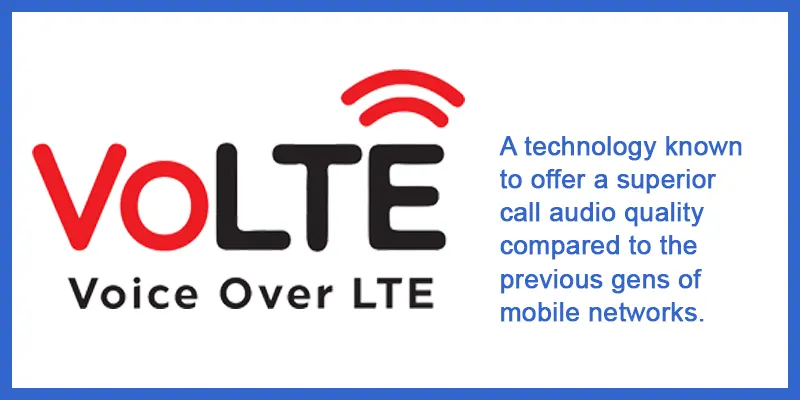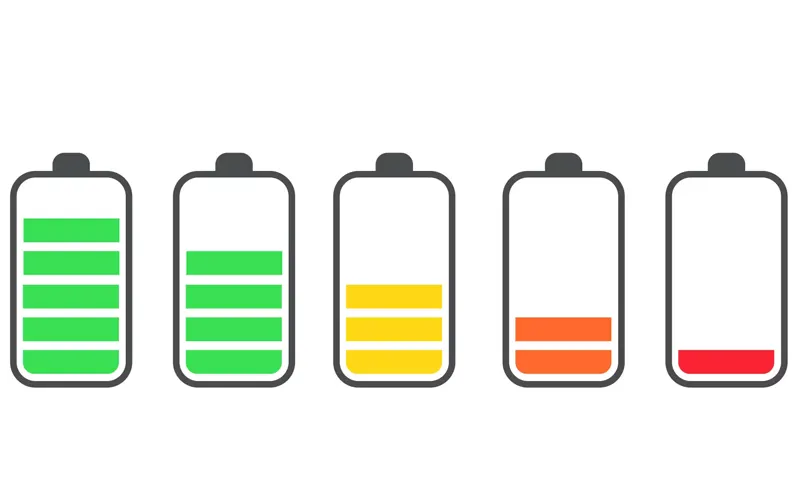LTE vs VoLTE: Diving Into The Differences
If you’re new to the world of mobile and telecommunication technologies, you may assume LTE and VoLTE are the same things. While you’ll be easily forgiven for thinking so, this assumption is incorrect.
Their names might cause confusion but LTE and VoLTE are two completely different technologies. While one technology is a new generation of mobile networking, the other simply allows for a richer communication experience.
This was just the primary distinction between the two. There are many significant differences between these two technologies. Knowing and understanding these differences will help you further your knowledge in the mobile telecommunication field.
We shall dive deep into the differences between these technologies in this article. Before we do that, let’s start with the basics and understand what these two technologies are.
So let’s begin now, shall we?
What is Long Term Evolution (LTE)?

LTE, or Long-Term Evolution, is a standard for wireless broadband communication. It is widely used for mobile devices around the world.
It is a fourth-generation (4G) mobile network technology that provides high-speed data transfer and internet connectivity to smartphones, tablets, and other mobile devices.
From a technical standpoint, LTE is based on Orthogonal Frequency Division Multiplexing (OFDM) and Multiple Input Multiple Output (MIMO) technologies.
OFDM allows for the efficient use of bandwidth by dividing a single data stream into multiple sub-streams. These are transmitted simultaneously over different frequencies.
MIMO technology uses multiple antennas at both the transmitter and receiver to improve the reliability and speed of data transmission.
LTE operates on a different frequency band than 3G and 2G, typically in the 700 MHz to 2600 MHz range. These frequency bands offer greater bandwidth compared to older mobile network technologies.
This allows for faster data transfer speeds and improved network efficiency. LTE is also designed to be more scalable and flexible. It's easier for mobile network operators to upgrade and expand their networks.
LTE technology uses a packet-switched network architecture. This is more efficient than the circuit-switched architecture used by 3G and 2G networks.
In a packet-switched network, data is divided into small packets that are transmitted individually and reassembled at the receiving end. This allows for more efficient use of network resources and improved reliability of data transmission.
LTE also supports a variety of advanced features, such as voice over LTE (VoLTE), high-definition (HD) voice calls, and video calls.
It also provides improved support for multimedia messaging and mobile broadband services such as online gaming, video streaming, and file downloads.
With LTE covered, let’s move on to understanding what VoLTE is!
What is Voice over LTE (VoLTE)?

VoLTE, or Voice over LTE, is a technology that allows for voice calls to be made over a 4G LTE network rather than the traditional circuit-switched voice network.
It provides high-definition (HD) voice calls and improved call quality compared to traditional voice services.
From a technical standpoint, VoLTE uses IP-based technology to transmit voice calls as data packets over a 4G LTE network.
This is in contrast to traditional voice services, which use circuit-switched technology to establish a dedicated connection for each voice call.
By transmitting voice calls as data packets, VoLTE enables more efficient use of network resources and improved call quality.
One of the key benefits of VoLTE is its support for HD voice calls, which provide clear, natural-sounding audio that is comparable to face-to-face conversation.
VoLTE also supports video calls, which allow for real-time video communication over a 4G LTE network. Another advantage of VoLTE is its ability to provide faster call setup times compared to traditional voice services.
This is possible as calls are transmitted as data packets over the 4G LTE network, rather than being routed through a separate circuit-switched network.
VoLTE also provides improved network efficiency compared to traditional voice services.
By using a packet-switched network architecture, VoLTE enables more efficient use of network resources. Which in turn allows for multiple voice calls to be transmitted simultaneously over the same network.
Now that we have the basics covered, let’s check out what the key differences between these two technologies are!
Key Differences between LTE and VoLTE
Knowing the fundamental differences is where we are going to start. These key or fundamental differences between LTE and VoLTE are as follows:
Data Speeds
LTE provides fast data speeds, making it ideal for internet browsing, video streaming, and gaming.
VoLTE, on the other hand, is specifically designed for voice calls and provides high-quality voice services.
Voice Calls
With LTE, voice calls are made over 2G or 3G networks, while data services are provided over the LTE network.
With VoLTE, both voice calls and data services are provided over the LTE network, providing a more efficient and high-quality call experience.
Network Efficiency
LTE uses separate networks for voice and data services, which can result in inefficiencies in network utilization.
VoLTE uses the same LTE network for both voice and data services, providing more efficient use of network resources.
Now you know the key differences between the two technologies. We can now deep dive and understand more differences in detail.
Let’s start by pitting the two technologies against one another.
The Advantages of LTE Compared to VoLTE
Here, we will find out how LTE is superior to VoLTE. This will grant you a thorough understanding of the differences between the two.
The advantages are as below:
Wider Coverage
LTE has a much wider coverage area compared to VoLTE. It is a data-only technology that does not require the same level of the network infrastructure as VoLTE. This means that users can access LTE services in more areas compared to VoLTE.
Faster Data Speeds

LTE provides faster data speeds compared to VoLTE, as it is designed specifically for data communication.
This allows users to enjoy faster internet browsing, download speeds, and streaming of multimedia content, making it a more suitable option for data-intensive activities.
Lower Latency

LTE has lower latency compared to VoLTE, which means that data is transmitted and received faster. This results in a more responsive and seamless user experience. Especially true for real-time applications such as online gaming and video conferencing.
Simpler Deployment

LTE is a simpler technology compared to VoLTE, as it does not require the same level of network infrastructure and integration as VoLTE.
This results in lower costs and faster deployment times for mobile operators, making it a more cost-effective solution for data communication.
Better Network Capacity
LTE provides better network capacity compared to VoLTE, as it is designed specifically for data communication.
This allows mobile operators to provide better coverage and capacity for their customers, resulting in a more reliable and consistent data communication experience.
Disadvantages of LTE
LTE was a major breakthrough in mobile communication technology. However, no technology is perfect and each one has a set of drawbacks.
For LTE, these drawbacks are as follows:
Limited Bandwidth
LTE networks are often congested, particularly in densely populated areas. This can result in slow data speeds and reduced network performance. This can be a major issue for users who rely on their mobile devices for work or entertainment.
High Infrastructure and Operational Cost

LTE technology is more expensive than older mobile communication technologies, both in terms of equipment costs and service fees.
This can make it difficult for some users to access the benefits of LTE, particularly those in developing countries or with limited financial resources.
Network Coverage Limitations
LTE coverage can be limited in certain areas, particularly in rural or remote regions. Considering the high setup cost, operators may opt out of providing LTE coverage to areas which aren’t profitable.
This can result in a reduced user experience, as users may experience dropped calls or slow data speeds.
Battery Drain

LTE technology can consume a significant amount of battery power. This is particularly true when using data-intensive services such as streaming video or downloading files.
This can be a major issue for users who need to be mobile for extended periods of time.
Interoperability Issues
LTE technology uses different frequency bands in different regions of the world. This can result in compatibility issues between devices from different manufacturers.
Thus, incompatibility can be a major issue for international travelers who need to use their mobile devices in multiple countries.
The Advantages of VoLTE Compared to LTE
We’ve understood every way in which LTE is better than VoLTE. However, this does not mean that VoLTE does not have any aces under its sleeves.
VoLTE outshines LTE in the following key areas:
Enhanced Call Quality

VoLTE offers enhanced call quality compared to traditional voice calls over an LTE network, as it uses high-quality audio codecs for voice transmission.
This results in clearer, more natural-sounding voice calls, with reduced background noise and improved voice clarity.
Faster Call Setup Times
VoLTE provides faster call setup times compared to traditional voice calls over an LTE network. Not requiring the time-consuming process of switching from an LTE data connection to a voice network makes VoLTE faster.
This results in a more seamless and efficient calling experience for users.
Multi-tasking Capabilities

VoLTE allows users to make voice calls while simultaneously using data services, such as browsing the internet or streaming multimedia content.
This results in a more efficient and productive user experience, as users can multi-task without interruption.
More Efficient Network Utilization
VoLTE is a more efficient use of network resources compared to traditional voice calls over an LTE network. It eliminates the need for separate voice and data networks and thus, offers higher efficiency.
This results in better network utilization, with fewer idle resources, and improved overall network performance.
Future-proof Technology
VoLTE is a future-proof technology, as it uses the LTE data network for voice calls, which is the same network used for data communication.
This means that as LTE technology evolves, so too will VoLTE, providing a consistent and reliable voice communication solution for users.
Disadvantages of VoLTE
Wherever there are significant advantages, there are bound to be a few noticeable disadvantages too. VoLTE is no exception to this postulate.
The following are some disadvantages associated with VoLTE:
Limited Availability
VoLTE is not yet widely available in all regions, and may not be offered by all mobile network operators. This can result in a limited user experience, as users may be unable to make VoLTE calls in certain areas or with certain devices.
Interoperability Issues
VoLTE requires a compatible device and network infrastructure, which can result in interoperability issues between devices from different manufacturers or networks.
This can be a major issue for international travelers who need to use their mobile devices in multiple countries.
Associated Cost
Implementing and deploying a VoLTE network can be more expensive than traditional circuit-switched voice networks.
This can result in higher costs for network operators, which may be passed on to users in the form of higher service fees.
Battery Drain
Making VoLTE calls can consume a significant amount of battery power, particularly when using high-definition voice services.
This can be a major issue for users who need to be mobile for extended periods of time. This also happens to be one common drawback of both LTE and VoLTE.
Quality of Service (QoS) Issues

VoLTE is dependent on a stable and fast data connection. This means the user experience is completely dependent on the quality of network access they have.
With that, we’ve covered every point that should help you distinguish between these two mobile communication technologies. So let’s wrap it up now!
Ending with
While LTE and VoLTE might be mistaken for the same thing, they’re two completely different technologies. The former enables faster and more stable mobile internet connections. The latter allows for high-quality audio calls and video call capabilities.
To put it simply, LTE is like an espresso and VoLTE is like a Cappuccino. Similar but not at all the same. There can be espresso without Cappuccino but not the other way around.
Was that too overly simplified? I believe an over-simplification was required after all the information we’ve consumed!
So are you an Espresso or Cappuccino person? Let me know!
























































































































